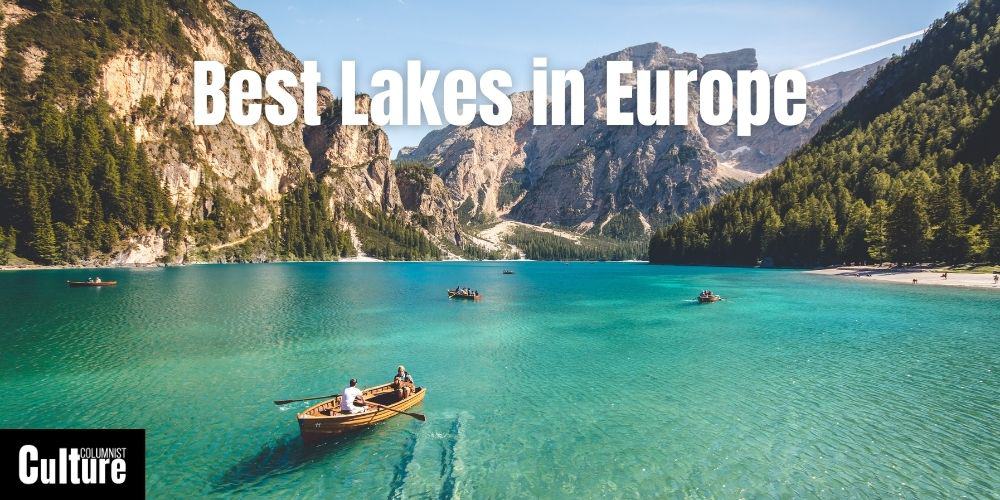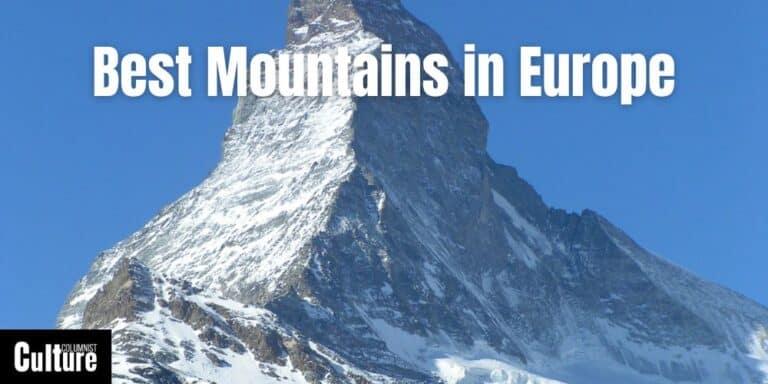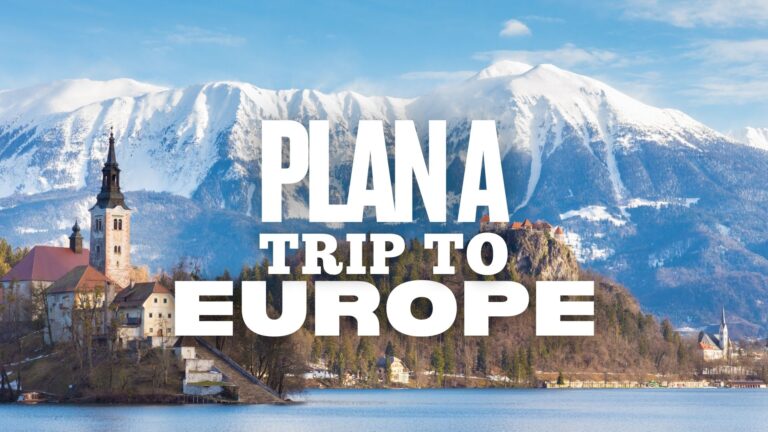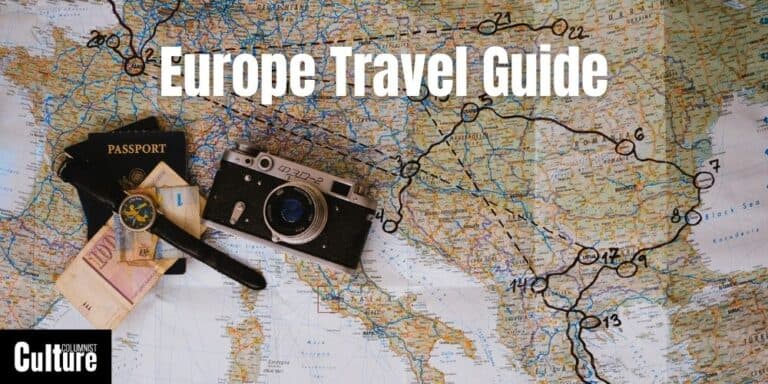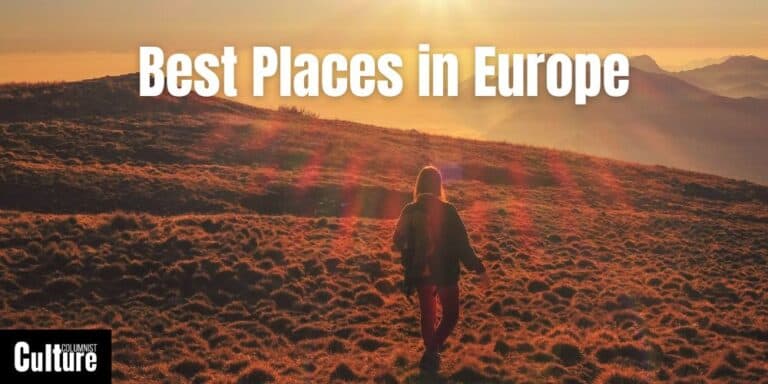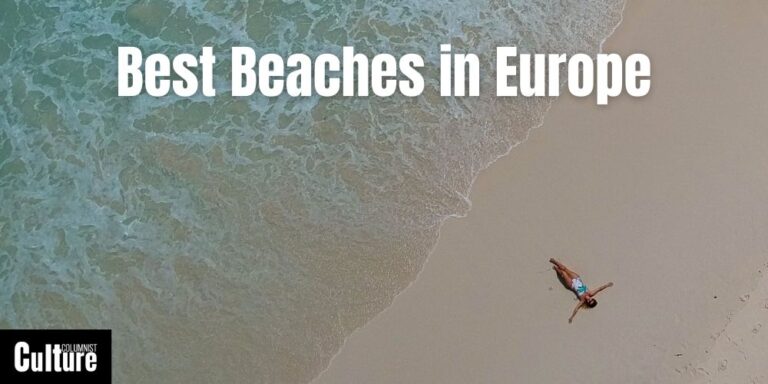Best Lakes To Visit In Europe
Europe has hundreds of thousands of lakes that attract millions of tourists each year from both inside and outside the continent.
From the picturesque waters of Lake Bled in Slovenia to the wide, open waters of Lake Geneva that straddle the border between Switzerland and France, each lake has something unique to offer each visitor.
However, with so many options out there, deciding which lake may be the best to visit can be a daunting task. Some lakes are renowned for their crystal-clear waters, while others are loved for their fishing or boating scenes.
Are you looking for an active water sports location, peaceful hikes, family-friendly activities, or perhaps a tranquil retreat just to recharge your batteries?
It’s worth mentioning that trips and stays around certain lakes can be pricier than others, such as Lake Como in Italy, which tends to be more of a luxury destination, while lakes in Eastern Europe like Lake Balaton in Hungary offer budget-friendly options.
However, despite higher prices, some lakes and destinations are worth the visit for their beauty alone, so don’t let that put you off!
In this guide, you’ll find a curated list of the best lakes to visit in Europe, each with its own unique features and attractions.
So whether you’re a young adventurer looking to explore, a couple chasing a romantic getaway, or a family wanting to create some cherished memories, get ready your swimwear, hiking boots, or fishing gear and get set to discover your next European lake destination.
Lac Léman (Lake Geneva)
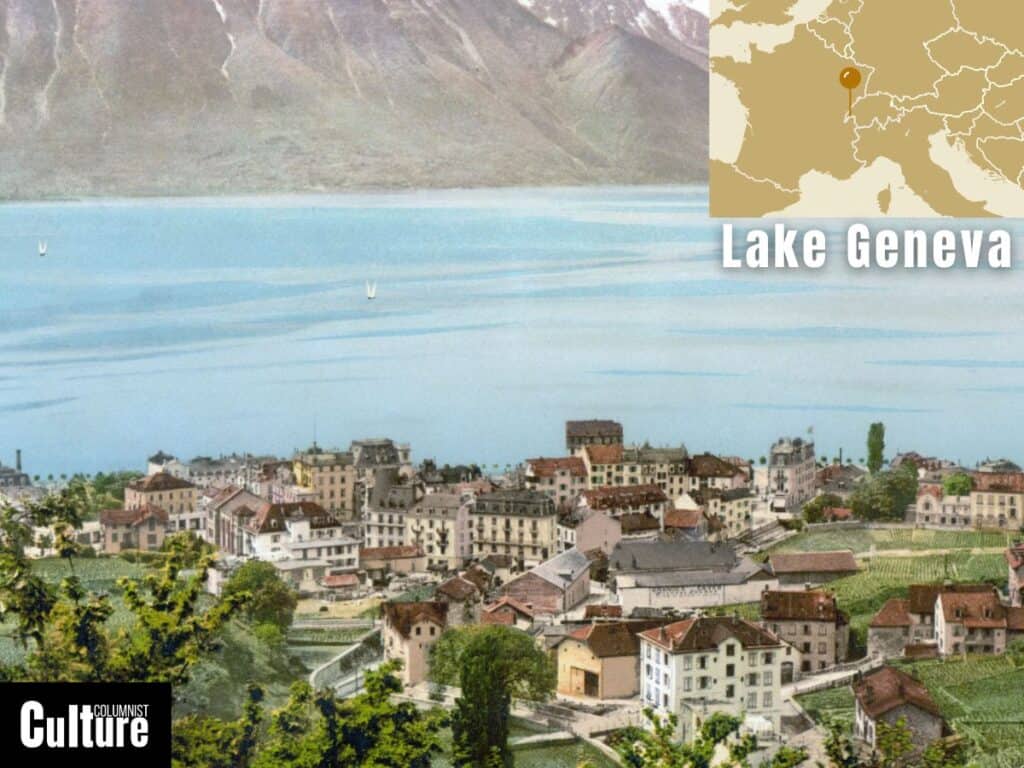
Lake Geneva, also known as Lac Léman, is one of Europe’s largest freshwater lakes and is located primarily in Switzerland along the border with France. It was created as a result of the withdrawal of the Rhône Glacier and is considered a deep water lake with an average depth of 154.4 meters, with its deepest recorded point at 310 meters.
The lake is surrounded by the Alps and Jura mountain ranges, with some of the best walkways and hiking trails along the lake’s north side, where you’ll find steep vineyard terraces and quaint Swiss villages to stop and take a swim. The main cities and towns around the lake are Geneva, Lausanne, Montreux in Switzerland, and Thonon-les-Bains in France.
Lake Geneva has multiple cultural attractions and historical sites of interest, including the Château de Chillon near Montreux, a medieval fortress sitting directly on the lake’s edge, the Olympic Museum in Lausanne, the UNESCO Vinyard Terraces of Lavaux, the famous Montreux Jazz Festival, and the old town of Geneva itself.
You can rent a boat from Geneva by the day or opt to sit back and relax on one of their Belle Époque boats and take in the lake from a different perspective. The boat tours depart every day and allow you to get off and explore some of the small lakeside villages along the way, then hop back on to continue your journey. Water sports such as paddleboarding and diving are also available in Geneva.
Lake Bled
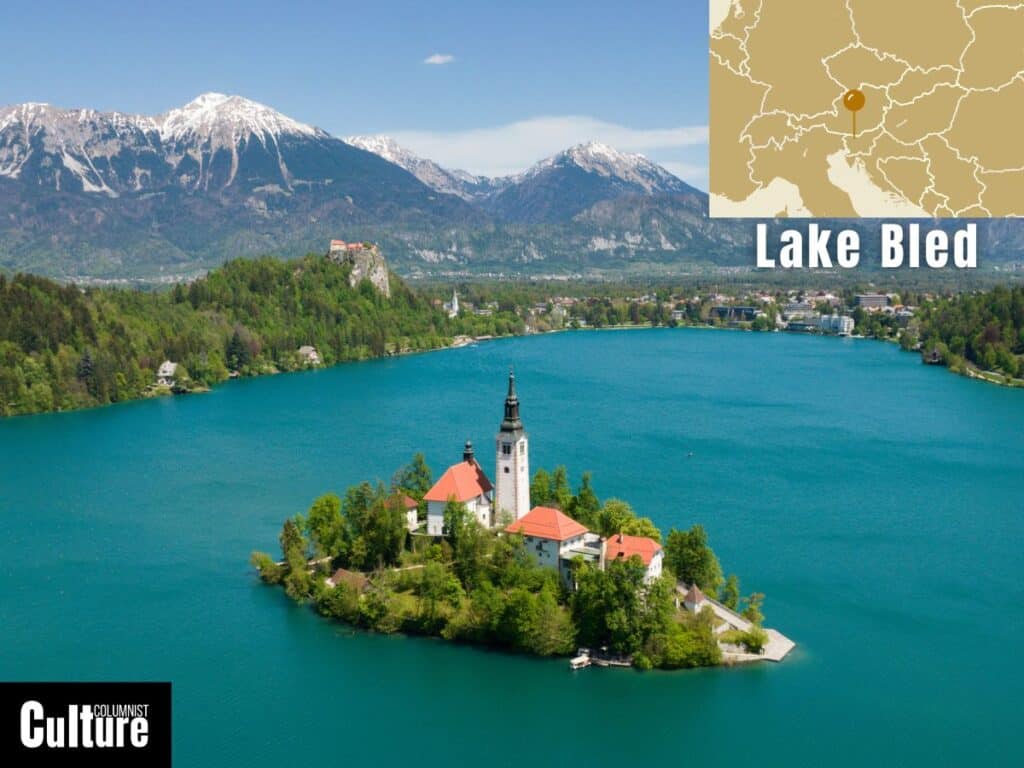
Lake Bled is in northwestern Slovenia and is situated among the Julian Alps. The lake was created by a retreating glacier and covers an area of 1.45 square kilometers with a depth of 31 meters. While Lake Bled is relatively small compared to other European lakes, it’s incredibly scenic. It’s famous for it’s fairy-tale-like atmosphere and a tiny island that appears to float in the middle of the lake.
Lake Bled is set against the backdrop of the Julian Alps and is surrounded by lush forests and meadows that change color with the seasons. Its waters are a stunning shade of blue that can vary in intensity depending on the light, making it ideal for budding photographers. The only town on the lake is Bled itself, but there are multiple hotels and lodgings around the lake that offer different vantage points.
Lake Bled has multiple attractions for adventure seekers, culture lovers, and history enthusiasts. The iconic Bled Castle, perched on a cliff overlooking the lake, dates back to the 11th century and is one of the oldest castles in Slovenia, while the church on Bled Island, the Church of the Assumption, has been a pilgrimage site for centuries.
Visitors can venture to the island themselves by hopping on one of the traditional wooden boats known as a “pletna” to cross the serene waters and dock at the foot of the 99 steps leading up to the iconic church. To capture one of the best views of Lake Bled, take the route to Mala Osojnica on the west side, which offers rewarding aerial views.
Lake Como
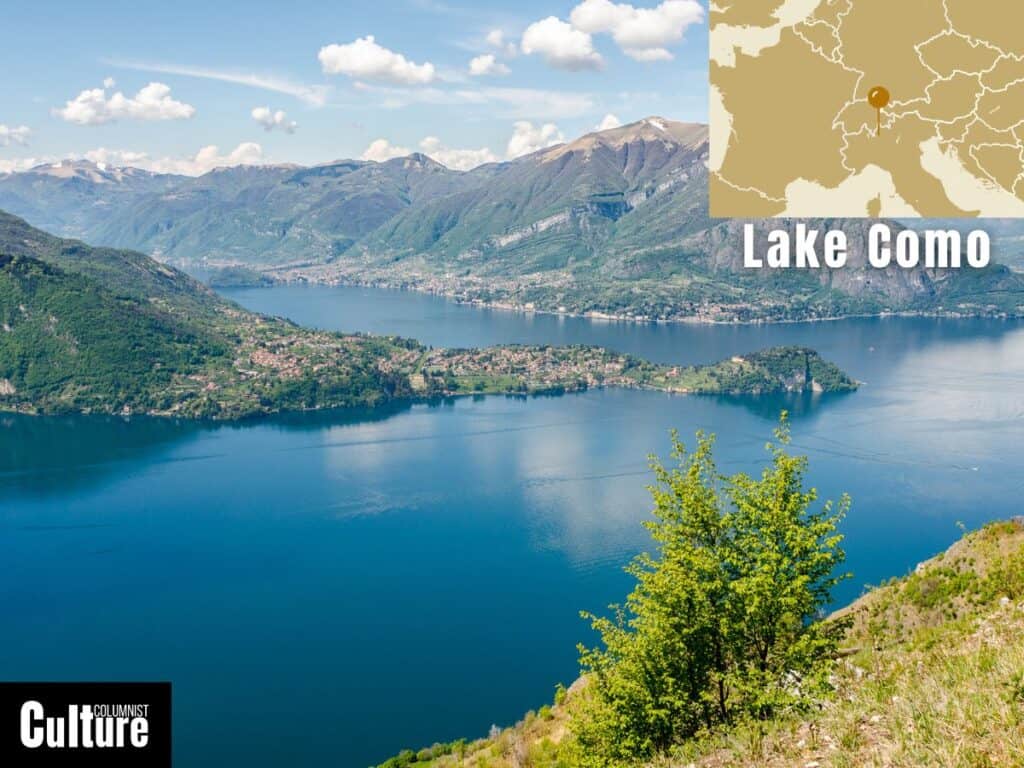
Lake Como is situated in the Lombardy region of northern Italy and is one of the deepest lakes in Europe at 425 meters. The lake has been a significant point of retreat for aristocrats and nobility all the way back to Roman times, earning it a reputation for opulence and elegance. Formed by a retreating glacier, the lake itself covers an area of 146 square kilometers and is shaped like a wishbone carved out of the Italian Alps.
Lake Como is widely recognized for its idyllic setting nestled in the rugged, alpine backdrop of the Lombardy Mountains, with dense forests providing a lush perimeter that feels secluded and remote. The lake is dotted with medieval towns such as Varenna, Bellagio, and Como itself that provide a mix of classical architecture with stunning lake views.
A visit to Lake Como isn’t complete without a stroll around the opulent villas and gardens that line the lake’s shores. Villa Carlotta, with its museum and botanical garden, and Villa del Balbianello, a popular filming location, are among the most famous. The waterfalls known as Acquafraggia, situated in Piuro, and the Bellona Gorge also offer stunning natural beauty.
With everything from panoramic flight tours by helicopter to adrenaline-filled activities like paragliding, scenic hiking trails, relaxed boat cruises and excursions, watersports, winetasting, and even a good old fashioned Italian food tour, it’s safe to say there is something fun to do for everyone at Lake Como.
Loch Ness
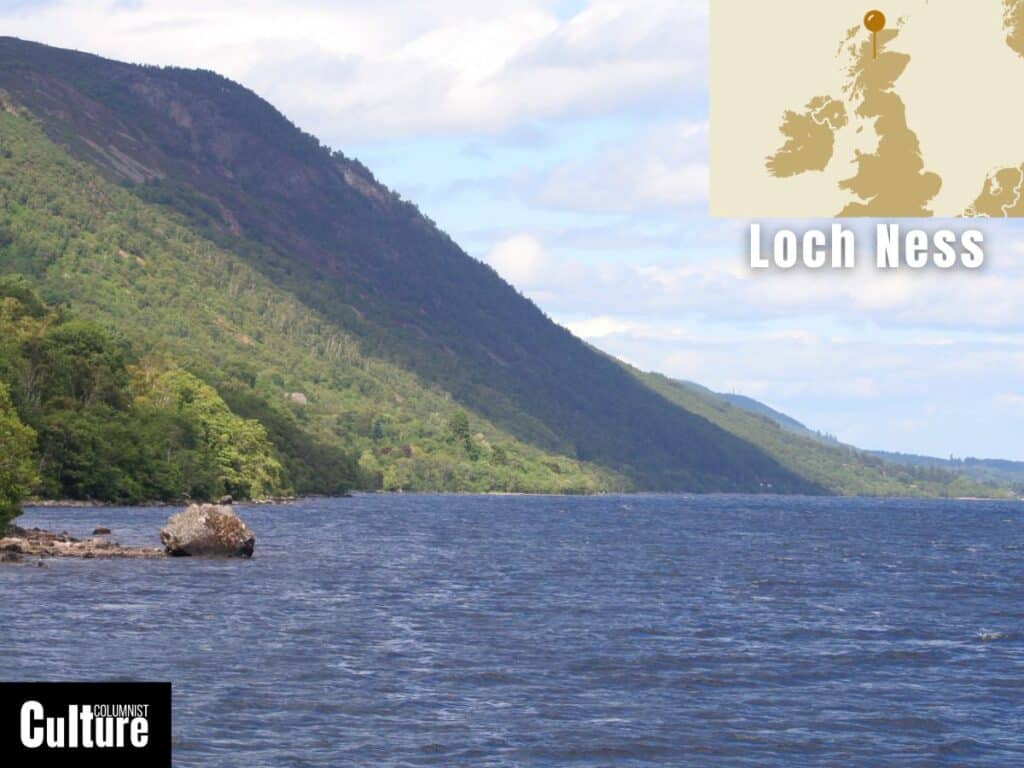
Loch Ness is a large freshwater lake situated southwest of Inverness, amidst the Scottish Highlands. The lake spans 36.2 square kilometers and has an average depth of 132 meters, making it the second-deepest loch in Scotland and one of the largest freshwater lakes in the British Isles. It’s waters are extremely murky due to the high peat content in the surrounding soil, and it’s known internationally for its elusive inhabitant, the Loch Ness Monster.
The surrounding landscape consists of steep, forested slopes that rise immediately from the lakeside, providing the perfect mystical backdrop to the lake’s long views of the water. Drumnadrochit and Fort Augustus are the main stopping points along the journey before you loop back toward Inverness.
Visitors can explore the ruins of Urquhart Castle, which has stood on the lake’s western shore for over a thousand years and provides panoramic views of Loch Ness. There is also the Loch Ness Centre and Exhibition in Drumnadrochit, which explores both the natural history of the lake and the story behind the Loch Ness Monster, which made it so famous.
Boat tours are available for those who wish to scour the water for a glimpse of Nessie or to simply appreciate the lake’s natural beauty. For those who want a bit more variety, you can also experience the lake through horseback riding excursions, hiking trails, and cycling routes, which are highly recommended to see the surrounding natural waterfalls of Plodda, Divach, and Foyers.
Lake Garda
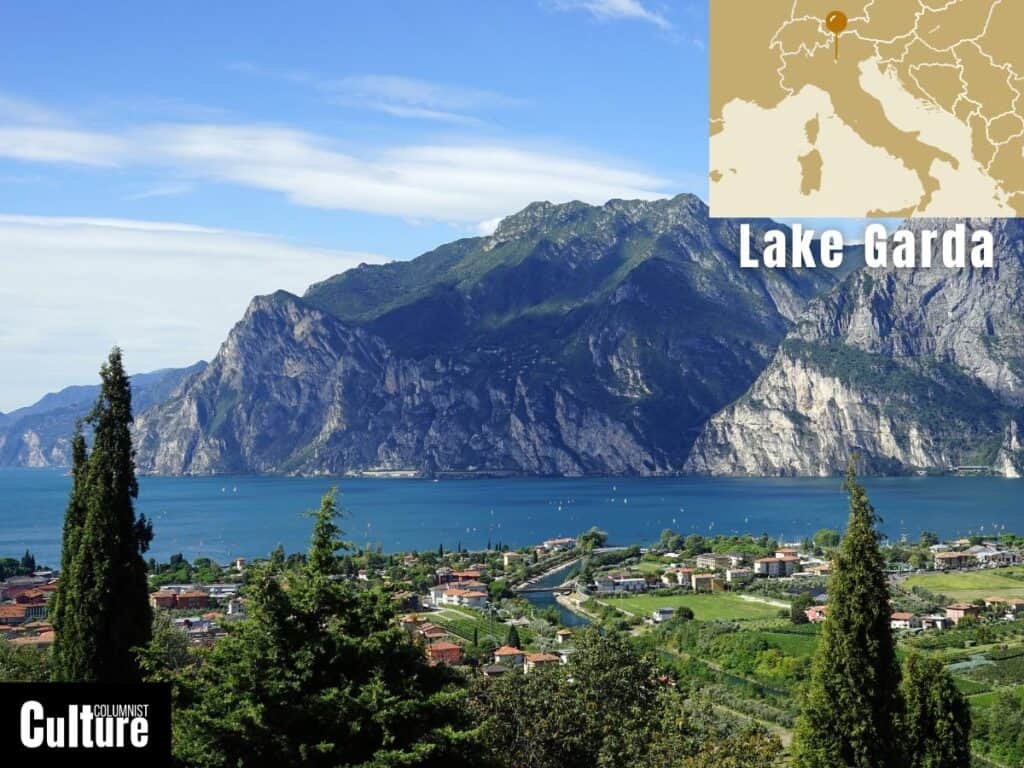
Lake Garda is Italy’s largest lake and is situated between Venice and Milan, straddling three provinces of the region: Lombardy, Veneto, and Trentino-Alto Adige. The lake stretches over an area of 370 square kilometers and reaches a maximum depth of 346 meters.
It not only has beautiful waters but also has five of its own islands: Isola del Sogno (Island of Dreams), Isola dell’Olivo (Island of Olive Trees), Isola di Trimelone, Isola di San Biagio, and Isola del Garda. The northern part of the lake is narrow, only 2 kilometers wide, and is flanked by steep, rocky mountain faces. The southern part of the lake is wider, with many beautiful villages and towns dotted along its banks, like Sirmione and Desenzano del Garda.
Visitors can explore medieval castles around the lake, including the Scaligero Castle in Sirmione and the fortress in Malcesine. The Vittoriale degli Italiani, a hillside estate overlooking the lake, has museums and gardens to enjoy year-round. There are many vineyards and olive groves around the southern part of the lake that make for great foodie trips and wine tours.
There are many activities to keep you active on the lake, from sailing and windsurfing in the north to hiking in the nearby mountains or paddleboarding on the calm waters in the south. And if you’d like to soothe your aching muscles after a long, active day, don’t worry, because a visit to Lake Garda isn’t complete without taking a dip in its thermal springs, like the Parco Termale del Garda.
Loch Lomond
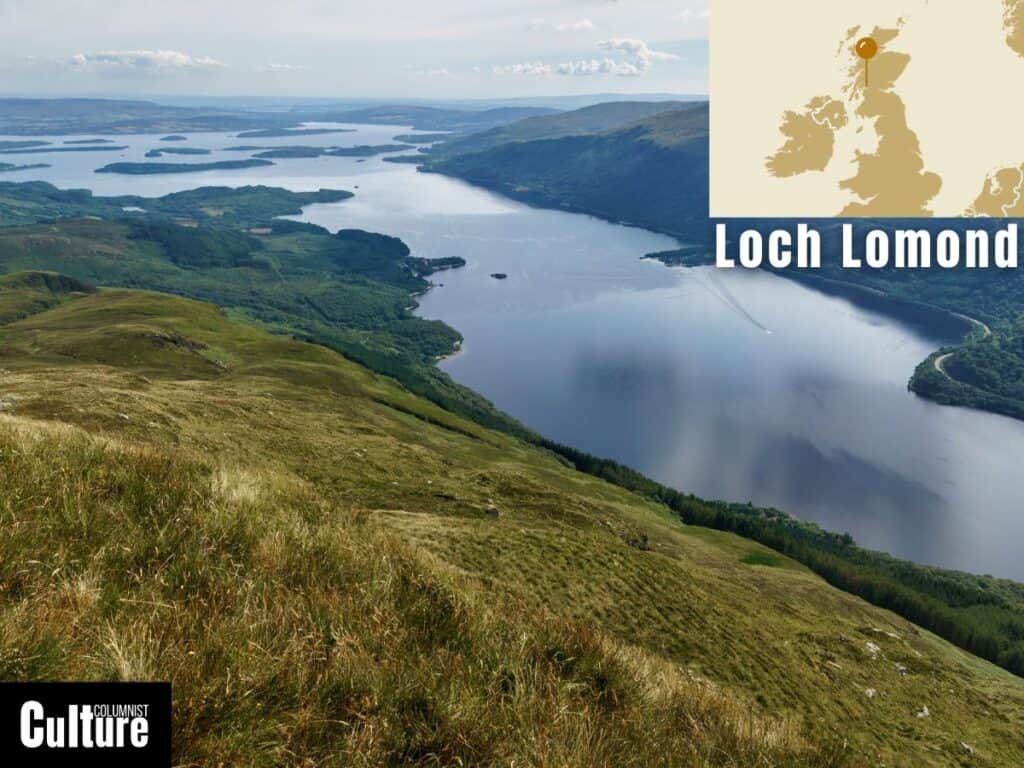
Loch Lomond is located in Scotland, northwest of Glasgow, and is the largest lake in Great Britain. It stretches for 39 kilometers in length, covering an area of 71 km² and is home to 22 islands and 27 islets. The lake sits on the fringes of the Scottish Highlands and forms the heart of The Loch Lomond and Trossachs National Park.
Because of its location in the footsteps of the Highlands, Loch Lomond is flanked by hills and mountains all around it, including Ben Lomond, which rises to 974 meters. There are a few villages that circle the lake along its perimeter, including Luss, Balmaha, and Inverarnan, which offer good starting points for ascending the adjacent hills to get views over the loch.
Nearby attractions include the historic Balloch Castle, which offers panoramic views of the lake, and the Loch Lomond Bird of Prey Centre, with daily falconry shows allowing you to see the hawks, owls, and eagles up close. History buffs can explore the ruins of Lennox Castle, while nature enthusiasts can explore the number of waterfalls around the lake.
Loch Lomond is visited for everything from boating, fishing, and hiking, particularly in The Loch Lomond and Trossachs National Park. There are local waterbus services that can take you from A to B if you prefer to make your own way around the lake, or their are dedicated cruises that allow you to sit back and take in the lake’s highlights.
Lake Balaton
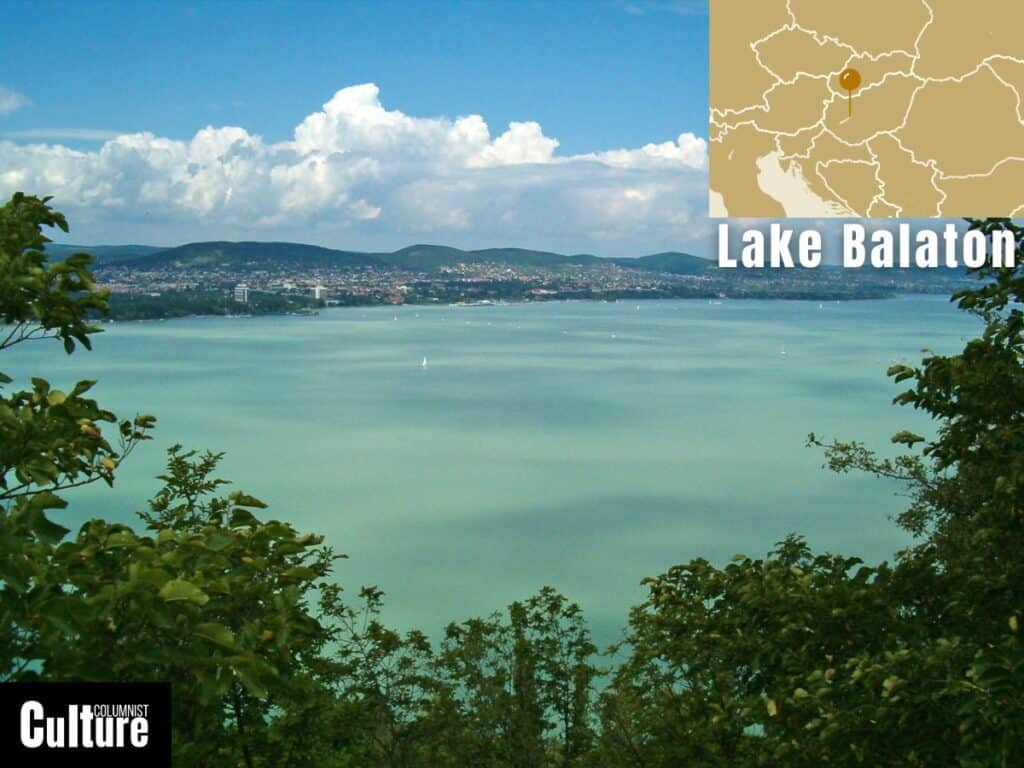
Lake Balaton is situated in western Hungary, to the southwest of the capital Budapest. The lake is about 77 km long and varies in width between 1.5 km and 14 km, making it the largest freshwater lake in Central Europe at 592 square kilometers, which is why it’s often referred to as the “Hungarian Sea”. However, because the lake is relatively shallow, with an average depth of about 3 meters, the waters are pleasantly warm during the summer.
The lake is surrounded by rolling hills, vineyards, forested areas, and agricultural land dotted with many towns and villages such as Keszthely, Hévíz, and Balatonfüred along its banks. The towns provide many different access points, accommodation options, and points of exploration on the lake.
There are several important landmarks to check out around the lake, including the Tihany Peninsula, known for its Baroque Abbey and lavender fields; the Festetics Palace in Keszthely, a Baroque-style castle; multiple spa towns; and even a geothermal lake in Hévíz, where you can indulge in some proper relaxation.
There is so much to do around and on Lake Balaton. You can rent almost anything, from a paddleboard, kayak, or pedaloo to proper sailing boats, and spend the day out on the expansive waters. Don’t leave without exploring the underground caves by boat and taking a picture in the beautiful sunflower fields in Balatonvilágos.
Lake Constance (Bondensee)
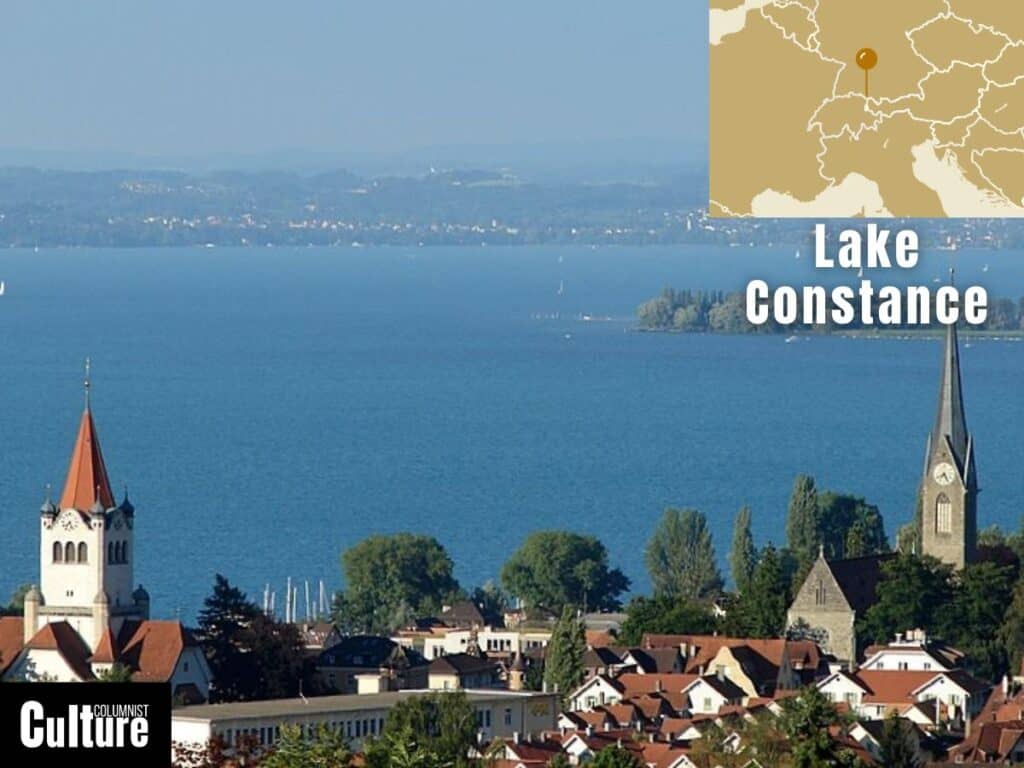
Lake Constance (Bodensee in German) is situated in the border region between Germany, Austria, and Switzerland. Lake Constance covers approximately 536 square kilometers with a maximum depth of about 252 meters and features a tiny island called Mainau, which is known for its beautifully landscaped and idyllic gardens.
The lake is surrounded by a diverse landscape that includes the Alps to the east and rolling hills and forests to the north and west. The lake has several charming towns and cities along the shoreline, including Konstanz, Friedrichshafen, Bregenz, and Lindau. These towns provide good access points to the lake, host festivals and events throughout the year, and are home to museums, churches, and monuments.
The lake is surrounded by numerous landmarks, including the Meersburg Castle in Germany with views over the lake, the Zeppelin Museum in Friedrichshafen with insights into the surreal world of airships, and the historic town of Stein am Rhein, known for its well-preserved medieval architecture and powerful waterfalls.
A truly unique way to see Lake Constance is by soaring above its waters aboard the Zeppelin NT. From Bodensee Airport, you can set off on a short scenic “cruise” of 30 minutes to an extensive three-hour aerial exploration at an altitude of 300 meters over the lake. Catamaran tours, sea ferries, and boat excursions are also available for you to enjoy the water and make your way easily around the lake.
Plitvice Lakes
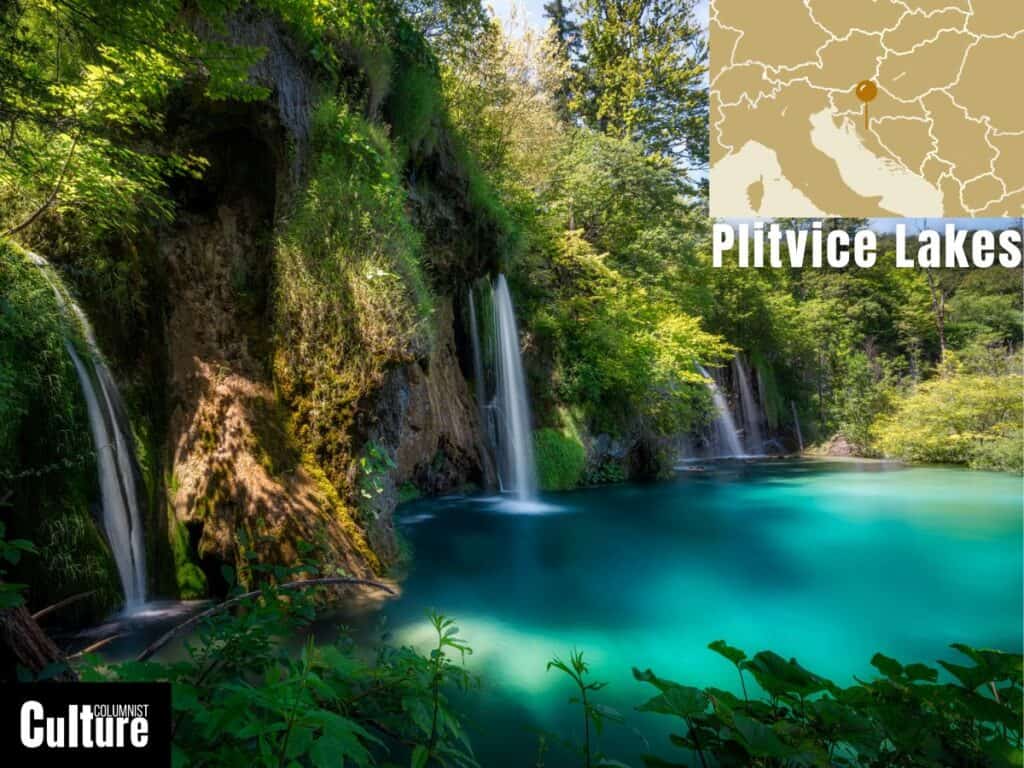
The Plitvice Lakes are located in Croatia, specifically in the mountainous karst area of central Croatia. The 16 cascading lakes interconnected by waterfalls are a UNESCO World Heritage Site and are part of one of the oldest and largest national parks in the country. The lakes vary in size and depth, with the largest, Kozjak, covering about 81.5 hectares.
The Plitvice Lakes are a must-visit for anyone who wants a truly immersive water experience. All of the lakes are interconnected by large and tiny waterfalls that cascade down the terraced landscape, while wooden pathways allow you to meander around and over the crystal-clear lakes, bringing you right into the heart of a symphony of running water.
While there are no castles or museums within the park itself, the site provides an educational experience through its presentation of natural history and geological processes. The lakes themselves are the attraction because of the vibrant color that emanates from the water, depending on the light and organisms that are present.
Plitvice Lakes National Park offers visitors eight different routes to tour the lake system and four hiking trails. The entrance fee ranges from 10-45 USD depending on the season, but it includes the use of the parks shuttle train and lake ferry, which take you out on the largest of the lakes, Kozjak, with spectacular views of the surrounding mountains and forests.
Lake Neusiedl
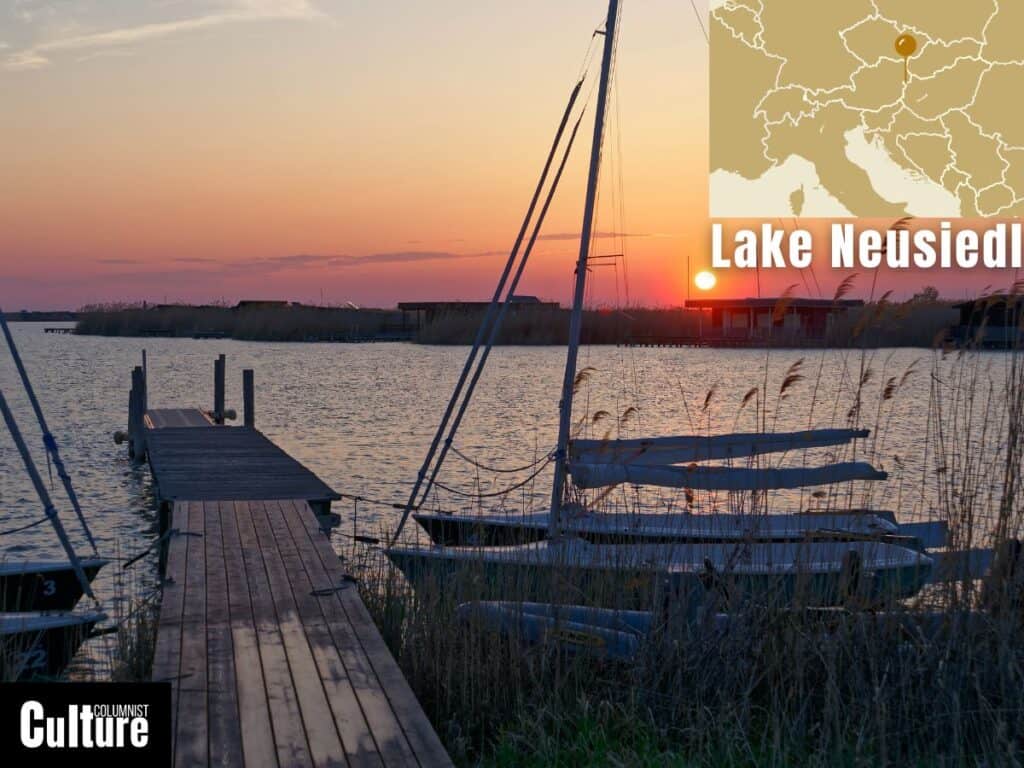
Lake Neusiedl is located on the border between Austria (Burgenland region) and Hungary. Covering an area of 315 square kilometers, it is Central Europe’s largest endorheic lake, meaning it does not drain into the sea. It has been recognized as a UNESCO World Heritage Site in combination with the surrounding cultural landscape of Fertö/Neusiedlersee.
The lake is relatively shallow, with an average depth of just over one meter, meaning that the lake is not overrun by large yachts and has a very calm atmosphere. The lake is fringed by large reed beds, flat grasslands, and Seewinkel National Park to the south. The most visited towns around the lake include Neusiedl am See, Podersdorf am See, and Rust.
The lake towns are rich with landmarks like the Esterházy Palace in Fertöd, which is often referred to as “the Versailles of Hungary”, Podersdorf Lighthouse, and Fertőrákos Quarry and Cave Theatre, an open-air theater venue carved directly into the limestone rock that offers performances and concerts with natural acoustics and a quarry wall backdrop.
The lake’s shallow, warm waters and steady winds make it ideal for paddleboarding and even hot air ballooning over the lake, while in winter it transforms into the largest ice rink in Europe. The area around the lake has many well-developed flat paths that are perfect for cycling, while the area’s vineyards provide an opportunity to taste the local wine as well.
Lake Saimaa
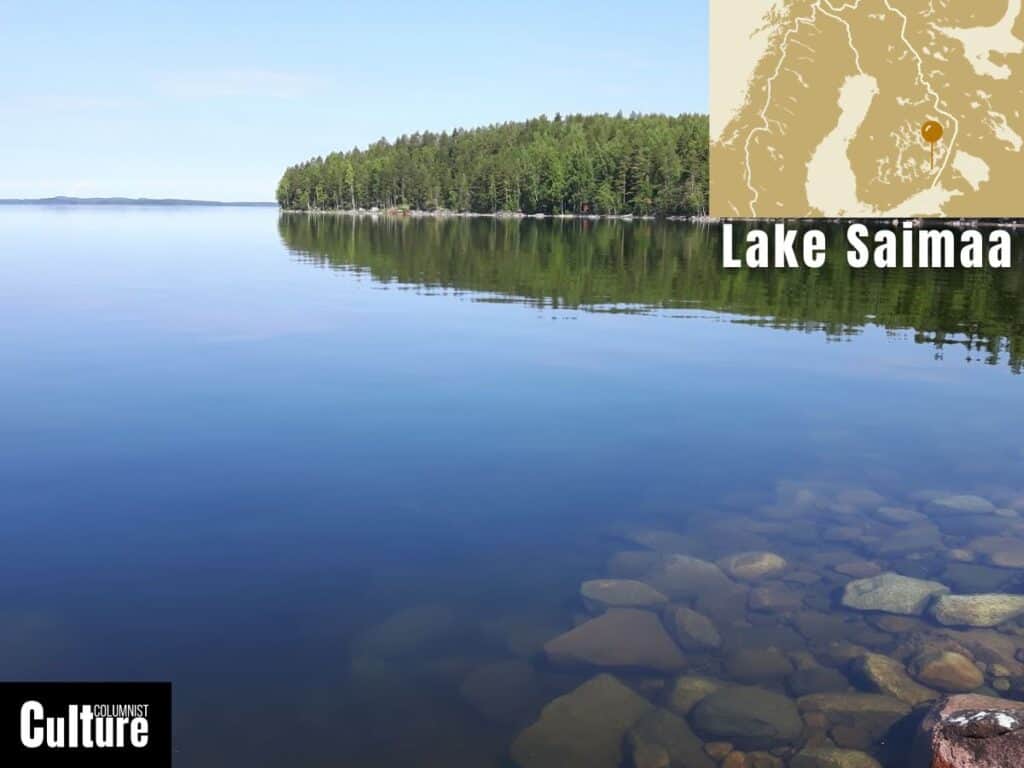
Lake Saimaa is located in southeastern Finland and is the largest lake in Finland and the fourth largest natural freshwater lake in Europe. The lake covers an area of 4,377 square kilometers and consists of several basins separated by islands, creating a complex network of channels and water bodies. Thousands lakes
The lake is surrounded by the stunning landscapes of the Saimaa Geopark, which features ancient rocks, boulders, long sandy beaches, rapids, and lush forests. The lake itself is known for its deep and clear waters and a unique ecosystem that is home to the rare Saimaa ringed seal. The towns of Lappeenranta, Imatra, and Savonlinna offer essential stopovers on your journey around the vast lake.
The lake is dotted with local attractions, including the world’s most northern medieval fort, the Olavinlinna Castle, which hosts the famous Savonlinna Opera Festival, the elaborate sandcastles and sand sculptures in the harbor of Lappeenranta, and various traditional Finnish saunas, so you can indulge in a 2,000-year-old Finnish tradition.
Some unique ways to experience the lake include cruising along the labyrinth waterways aboard a century-old steamboat with wooden decks and vintage cabins, cycling or road tripping from island to island around Punkaharju, or part-taking in the age-old tradition of berry picking along the lakeside and sampling the local produce and berry wines.
Lake Ohrid
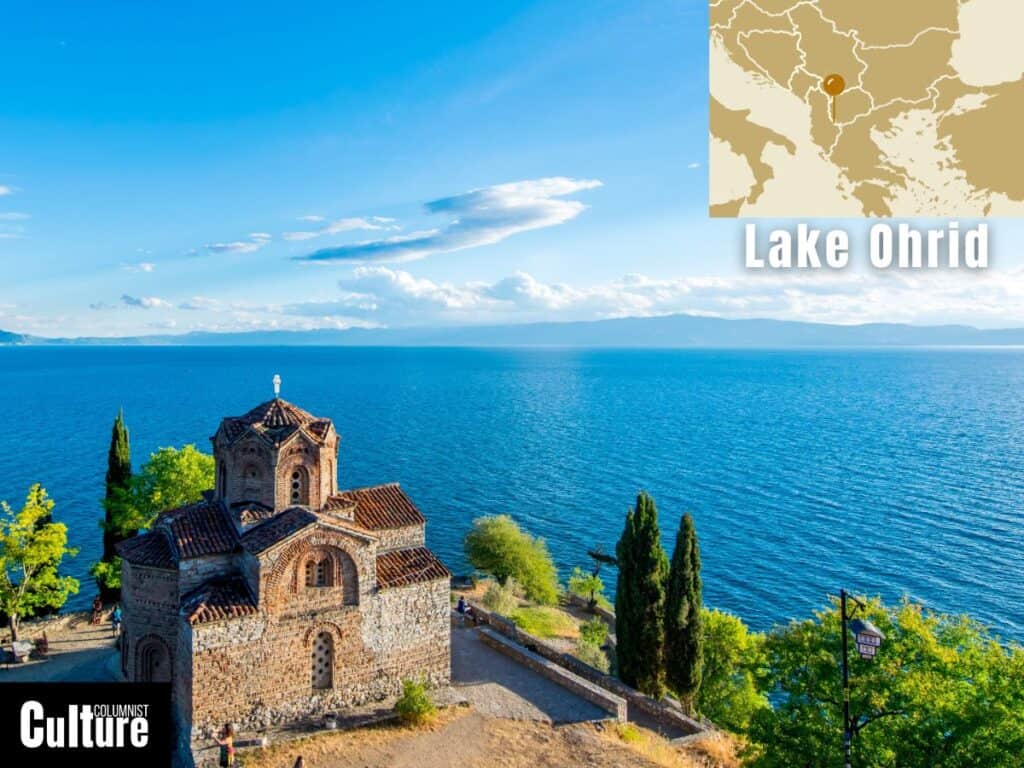
Lake Ohrid is located on the southwestern edge of North Macedonia, on the border with Albania. As one of Europe’s oldest and deepest lakes, with an estimated age of over three million years and depths reaching 288 meters, the lake has been awarded UNESCO World Heritage status, showing just how historic and beautiful it is.
Surrounded in places by rocky mountain cliffs and others by lush green forested hills, the shoreline is dotted with pebble beaches and secluded little coves to explore. Around the lake, there are several picturesque terracotta rooftop towns, including Pogradrec, Struga, and the town of Ohrid itself, often called the “Jerusalem of the Balkans”.
Lake Ohrid has many landmarks to explore, including the Church of St. John at Kaneo, perched on a cliff overlooking the lake, an ancient theater dating back to Hellenistic times, the Bay of Bones, an on-water natural history museum offering insights into ancient civilizations that once thrived here, and of course the Galichica National Park, which stands between Lake Ohrid and Lake Prespa.
There are plenty of different ways to see and experience the lake. You can hike to Magaro Peak for one of the tallest vantage points over the lake; there are on-the-water tours such as paddleboarding and kayaking; while those who prefer something a little more unique can opt for a mussel and oyster farm tour or an adventurous ATV tour in Galichica National Park for excellent views over the lake.
Lake Päijänne
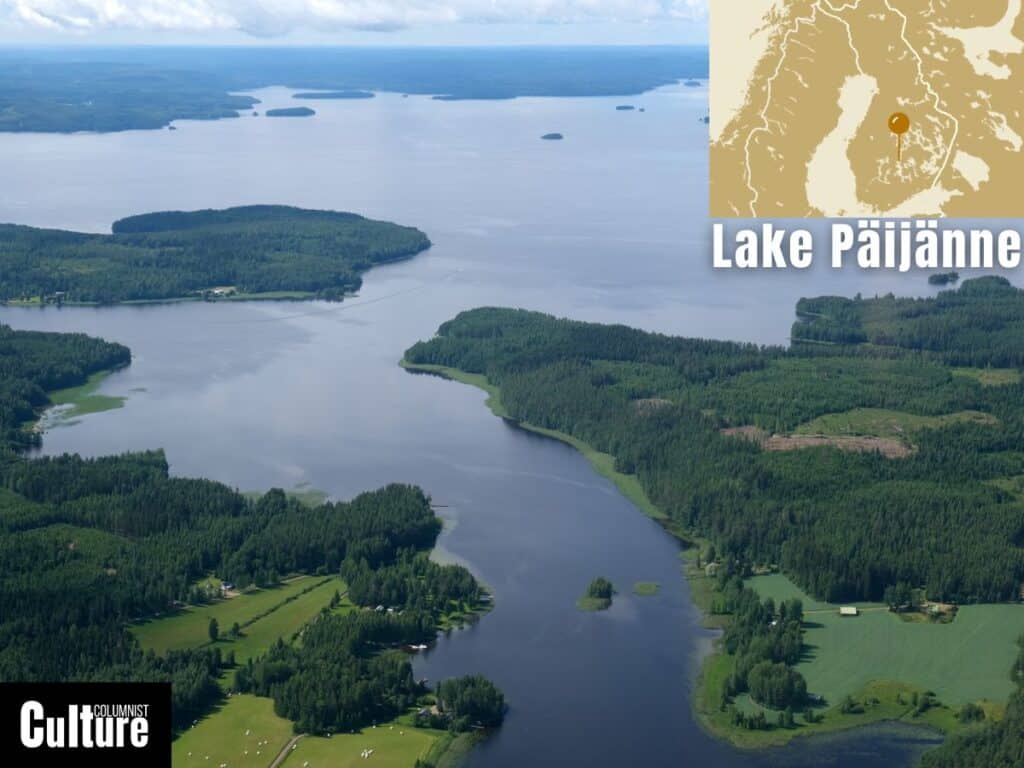
Lake Päijänne is the second-largest lake in Finland, situated north of Helsinki. Spanning 120 kilometers in length and an area of 1,080 square kilometers, Lake Päijänne is a vast and complex system of islands, peninsulas, and canals that connect it to other surrounding lakes, providing endless opportunities for exploration, particularly by boat.
Surrounding the lake are thick forests and undulating landscapes, some connected by an intricate system of roads and bridges that help to connect Lahti, the lake’s southern town, to Jyväskylä, the lake’s most northern city. The landscape is relatively flat without any towering mountains, allowing you to see for miles over the vast lake and dense woodlands.
Although there are no medieval castles around Lake Päijänne, the area does offer cultural sites like the Päijänne National Park, consisting of over 50 islands with sandy lagoons, idyllic marinas, and dramatic cliffs. Kelvenne Island is the most popular with it’s long 8-kilometer shoreline.
The lake is a hub for outdoor activities such as sailing, fishing, and canoeing. In winter, the region becomes a center for ice fishing and snow sports. If you’re a keen swimmer, Lake Päijänne offers fantastic open-water swimming with hardly any boat traffic, calm waters that are mild in summer, seemingly untouched landscapes all around, and wild and remote islets to venture to.
Lake Vänern
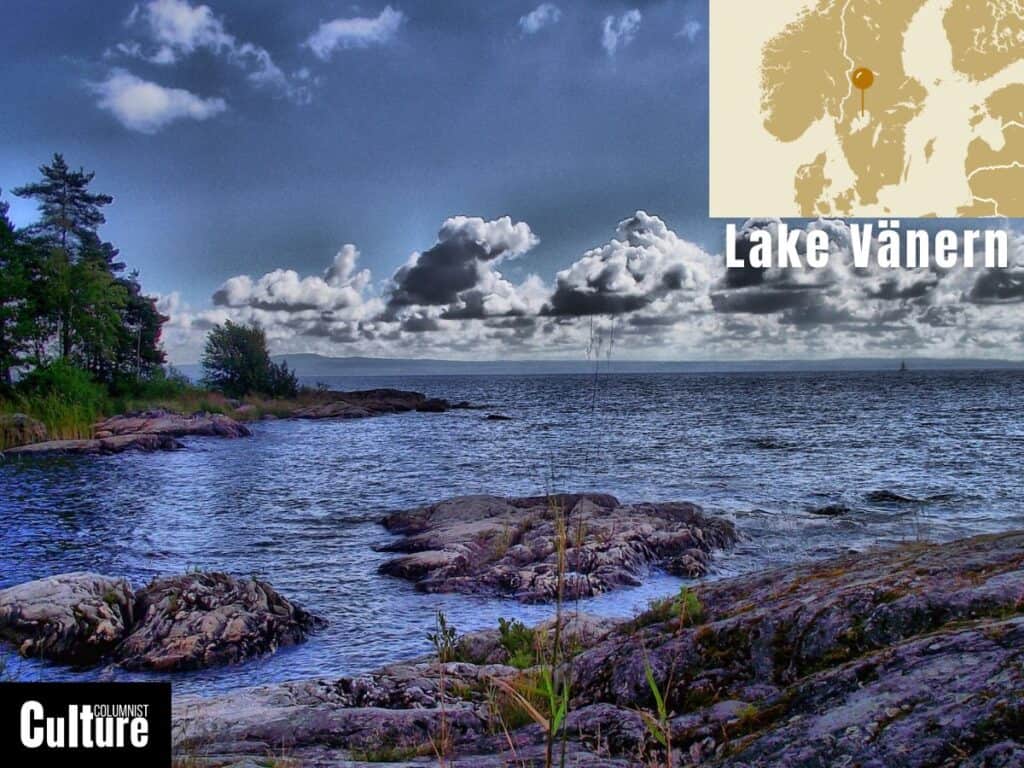
Lake Vänern is Sweden’s largest lake and the third-largest lake in Europe, spanning a staggering 5,650 square kilometers. This vast freshwater lake contains an intricate archipelago with over 22,000 islands, islets, and skerries, giving it a unique character unlike any other lake in Europe.
Lake Vänern’s sprawling waters evolve through a number of different landscapes, ranging from untouched forests to soft sandy beaches and rugged cliffs to marshy wetlands. The lake is a lifeline for numerous cities and quaint villages dotted along its shoreline, including Lidköping, Mariestad, and Karlstad, which is often referred to as the “Sun City” due to its consistent sunny weather.
There are numerous places to see along the lake, including the Läckö Castle on the Kållandsö peninsula, a majestic 13th-century fortress; the Djurö National Park with its array of islands right in the middle of the lake; and the ancient rock carvings at Tanum, a UNESCO World Heritage site showcasing carvings and primitive art from the Bronze Age, a short drive from the lake.
There are plenty of outdoor hiking and cycling routes around Lake Vänern. If you’re a fishing enthusiast, you can try your luck in the waters with guided fishing tours or rent your own boat and see if you can catch the famed Vänern salmon. Another fun experience on the lake that’s not to be missed is a water safari by kayak or canoe to see the lake’s biodiversity up close.
Lake Lucerne
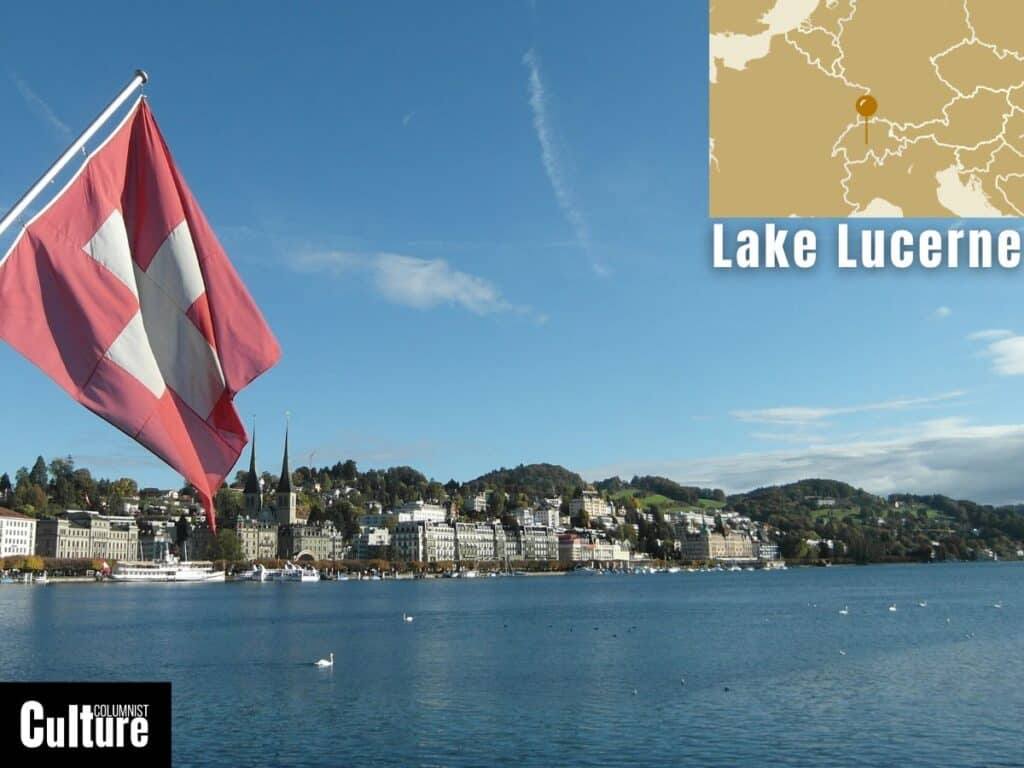
Lake Lucerne, known locally as Vierwaldstättersee, is one of Switzerland’s most iconic lakes and is nestled in the Swiss Alps. It spans approximately 114 square kilometers in an irregular shape, with four arms stretching out in different directions. The lake is very photogenic, with its traditional Swiss towns and idyllic villages dotted around the shore.
The lake is surrounded by towering peaks that rise straight up from the shoreline or give way to green meadows and forests. Around the lake perimeter, you’ll find Lucerne, the city that lends its name to the lake; Weggis, known as the “Riviera of Central Switzerland”; and Vitznau, the gateway to Rigi Mountain, offering scenic views over the lake.
There are a number of attractions around the lake that are worth visiting, including Rütli Meadow and the Tell Chapel. Take a panoramic cable car ride or old-world cogwheel railway up to one of the surrounding peaks, like Pilatus or Rigi, where you can soak in the breathtaking views of the shimmering blue lake.
The best way to see the lake is by making your way from town to town by hopping on and off the iconic Swiss tour boats, but there are also more adrenaline-filled activities like paragliding or skydiving. You can also hike The Swiss Path, which has 35 kilometers of easy hiking trails around the southern end of Lake Lucerne.
What is the largest lake district in Europe?
The Lakeland district in Finland is the largest lake district in Europe, spanning several regions including Tampere, Lahti, Jyväskylä, North Karelia and Häme. Lakes occupy about 25% of the district, including the fourth-largest natural freshwater lake in Europe, Lake Saimaa, at more than 4,400 square kilometres.
What country in Europe has the most lakes?
Finland has the most lakes in Europe, at 188 000 and most of them are situated in the heart of the country’s lake district. Notable lakes in the region include Lappajärvi, Inarijärvi (Järvi), Tuusulanjärvi, Julma-Ölkky and Sääksjärvi Lake, shaped by an enormous ice floe during the ice age.
The formation of Finland’s many lakes is a result of glacial activity from the last Ice Age. The retreating glaciers carved out the land, leaving behind a labyrinth of lakes and inlets that characterize northern boreal landscapes. This glacial history is a common thread in many European landscapes, from the fjords of Norway to the Alpine lakes of Switzerland and Italy.
What is the clearest lake in Europe?
Lake Annecy in France is the clearest lake in Europe. It’s fed with mineral-rich water from seven small rivers and an underground spring, providing a continuous flow of fresh water. Its clarity is also preserved by SILA (Lake Annecy Water Treatment District), which monitors water quality and acts to limit pollution.
What is the bluest lake in Europe?
Blåisvatnet in Norway is one of the bluest lakes in Europe. It’s bright turquoise color is thanks to its location at the foot of the Lenangsbreen glacier on the Lyngen peninsula. Fine silt particles that have eroded from the glacier have filtered into the lake and remain suspended in the water, making it appear cloudy.
Glacial lakes in Europe are generally found in major mountain ranges in the northern and central parts of the continent, like the Alps and Scandinavian Mountains. These mountainous regions typically have high altitudes and cold climates, where glaciers have been or are still present.
What is the largest man-made lake in Europe?
Alqueva Reservoir is the largest man-made lake in Europe, created by the Alqueva Dam in the southern region of Portugal. This body of water holds a capacity of 4,150 million cubic meters. The reservoir lake is so large that it forms part of the border between Portugal and Spain.
The Alqueva Reservoir is located on the Guadiana River, one of the longest in the Iberian Peninsula. Like many European rivers, the Guadiana is transboundary, flowing through more than one country, like the Danube, Rhine, and Tajo/Tagus.

